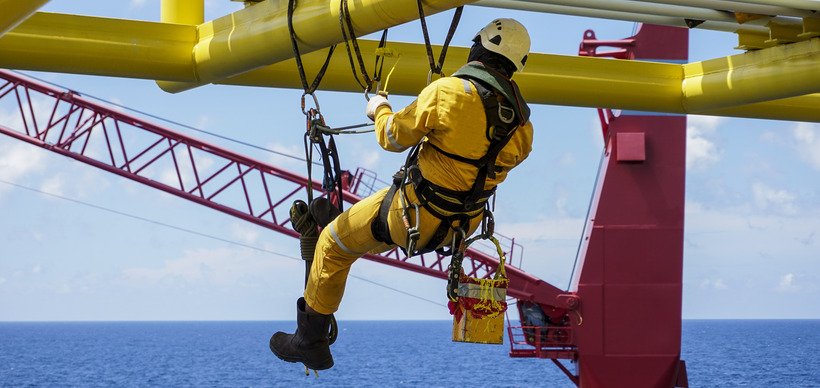8 Common Hazards Of Working At Height You Aren’t Aware Of
8 Common Hazards Of Working At Height You Aren’t Aware Of
June 21, 2023 |
Working at height is a dangerous activity. Many hazards can arise while you work at height, some of which are well-known and others that aren’t so obvious.
It is important to know these dangers so that you can take the necessary precautions to ensure your safety. Here are common hazards of working at height:
Slips And Falls
Slips and falls are the most common cause of injury in the construction industry. They can be caused by a number of factors, including:
- Wet floors
- Muddy floors
- Ice (on stairs or walkways)
- Oil and grease on floor surfaces (e.g., from machinery)
Loose or uneven surfaces often found at worksites can also lead to slips and falls if not properly maintained by workers trained to do so safely.
Inadequate Or Faulty Equipment
Inadequate or faulty equipment is the most common hazard of working at height. Falls, slips and falls, and accidents are the most common causes of injuries.
Inadequate or faulty equipment can cause you to slip or trip up or down ladders, scaffolding, and other temporary structures. It can also cause you to lose your balance if you’re carrying loads too heavy for one person to manage safely.
Water, Ice, And Mud
When working at height, one of the most common hazards is water. It can come in many forms: rain, snow, or ice. When working with these materials and they fall on people below you, it can cause severe injuries to them.
To avoid this hazard:
- Stay away from areas where high winds or rain storms are coming through. If there is no way around it, make sure everyone knows they need to take extra precautions while working out in those conditions – even if those precautions include wearing hard hats and goggles!
- Avoid using buckets full of liquid and shovels when dealing with ice because both could cause slips and falls if handled improperly by yourself or others nearby who aren’t aware of how dangerous these tools can be during inclement weather conditions like heavy rainfall/snowfall etc.
Hitting Your Head On An Overhead Object
If you’re working at a height and have to move around, it is easy to forget that obstacles are in the way. A common example is hitting one’s head on a ceiling beam or pipe. It can happen even if you’re standing still! If overhead objects are within reach (such as lights), ensure they are appropriately secured so they won’t fall down and hurt anyone who walks by them.
Falling Into Machinery Or Equipment
This is a common hazard of working at height, and many different factors can cause it. For example, if you’re working on an elevated platform that isn’t stable enough to support your weight, it’s straightforward for the entire platform to tip over if someone bumps into it or if there are strong winds. If you fall off the platform’s edge while trying to escape, this could result in serious injury or even death.
Electrocution
Electrocution is one of the most common hazards of working at height. You could be in danger if you’re not careful with electrical equipment.
Electrocution occurs when electricity passes through your body and causes injury or death. The amount of voltage required to cause electrocution varies depending on the type and amount of current flowing through your body and where it enters or exits (for example: through your hand vs. through your chest).
If a person is exposed to high levels of electricity for long periods without protection from insulation or other safeguards against shock hazards, he/she may experience severe injury or death due to burns caused by contact between his skin/body parts with energized parts such as live wires or equipment which has been damaged by water penetration into its interior components causing short circuits within them.
Prolonged Sitting Or Standing In One Position
This can lead to back pain, muscle cramps, strains, and fatigue. If you’re working at height and need to sit down for a while, take regular breaks from your job so you can move around and stretch out your muscles.
Collapse Of Structure Or Material
This is the most common hazard for workers at height. It can happen when there are not enough support points to hold the structure or material up or if too many people are standing on top of it. For example, if you’ve ever tried to stand on a chair with one leg and then stepped off, you know what happens: The chair collapses under your weight! Similarly, it may collapse if you’re working with scaffolding and have too many people on it at once (including yourself). In either case, this is why it’s so important for workers to follow all safety rules!
